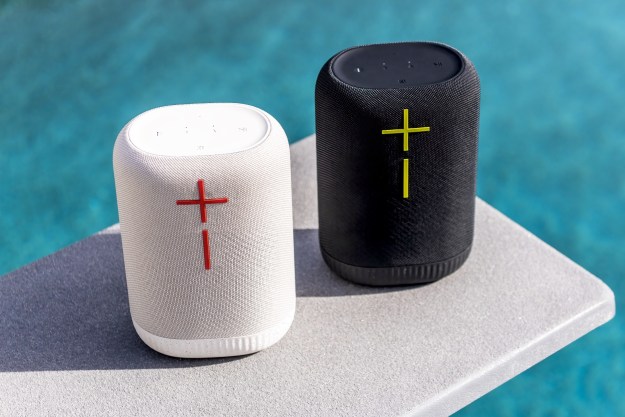Objest, a London-based purveyor of audio novelties, is asking for your help to get its sweet, little Bluetooth speaker off the ground and into living rooms. With a current pledged amount of about $8,000, the Quip, a pillow-shaped Bluetooth speaker, is roughly $340,000 short of its goal and has 33 days left to meet it. Quip is the first product to be produced by the new startup.
Pledging about $200 will net you a discounted Quip later this year – Objest has estimated it will have its very first baby ready to leave the nest in September.
The company says the Quip won’t have the tinny, plastic sound that emanates from a lot of cheap and “portable” Bluetooth speakers. To achieve a more solid sound without having to scrap the speaker’s portability and sleekness, Objest partnered with another English company, Sheffield-based Sontia, which designs digital sound processing products for companies like LG, THX, and other big brands.
Specifically, the speaker’s been enhanced with CSR’s aptX codec, making the sound transmitted via Bluetooth clearer, crisper, and less compressed. Within its pillow-like structure, the speakers sit in an off-axis arrangement for minimal distortion and buzzes.
As far as functionality is concerned, Objest claims that “if you’ve ever used a smartphone, you already know how to control Quip” – it has a capacitive touch interface that allows very simple volume control, track navigation, and call management. Objest describes the power and pairing buttons as “captured neatly within the band at the back of the product along with a micro USB for charging.” That’s right – you can pair this thing. Pair two Quips and you’ve got an even thicker sound that might even pass as a decent home surround system, though it’s hard to say for sure without a pair of them to test out.
And finally, aesthetically speaking, customers probably won’t be too disappointed with the Quip’s die-cast aluminum body and mirrored top that should make it a tasteful addition to any living room. If you think the Quip deserves to make it off the ground, you can make a pledge anytime for the next month.
Editors' Recommendations
- Sony’s ULT Power Sound headphones and speakers go big on powerful bass
- This JBL waterproof Bluetooth speaker is 43% off right now
- LG’s pill-shaped Bluetooth speaker doubles as a soundbar
- The best Bluetooth speakers for 2024: Marshall, Soundcore, JBL, and more
- Klipsch takes on Marshall with three new portable and rugged Bluetooth speakers


